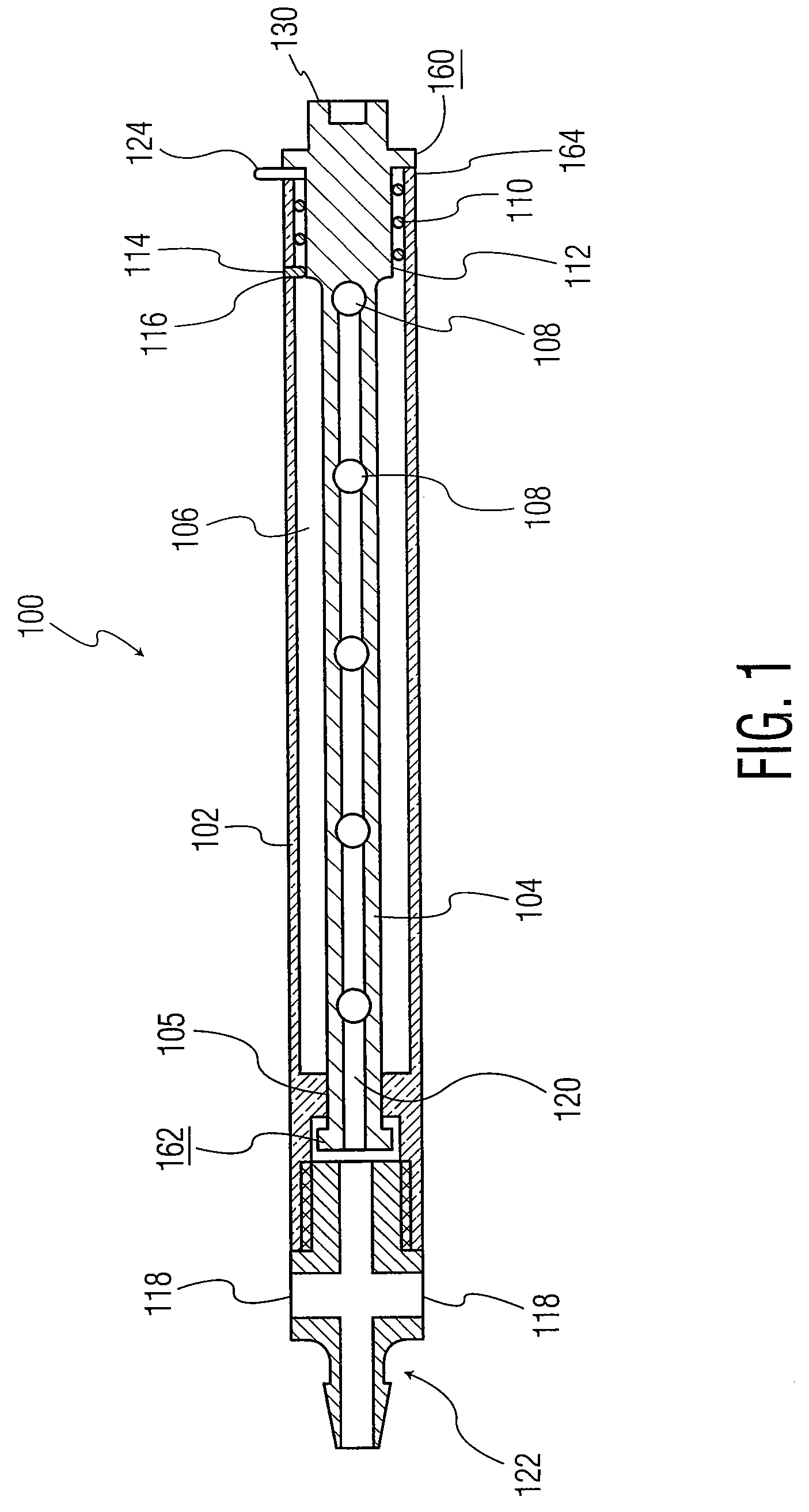Method for treating a wound
a wound and wound technology, applied in the field of wound treatment and wound closure, can solve the problems of large wounds that cannot be successfully treated, chronic wounds, and enormous burden on patients and society, and achieve the effect of maintaining tissue tension and reducing wound siz
- Summary
- Abstract
- Description
- Claims
- Application Information
AI Technical Summary
Benefits of technology
Problems solved by technology
Method used
Image
Examples
Embodiment Construction
[0027]Referring to FIG. 1, a cut-away side view of a first exemplary embodiment of the present invention is illustrated. As shown in FIG. 1, device 100 comprises external tube 102 having a hollow portion 106, and internal shaft 104 rotatably coupled to tube 102 at bearing portion 105. Internal shaft 104 has a plurality of receivers 108, such as holes or slots that pass through the radius of internal shaft 104 (best shown in FIG. 5A). As used herein, receiver is intended to refer to a feature of shaft 104 for interfacing and or attaching with sutures described below. Although hollow portion 106 is illustrated between an outer surface of shaft 104 and an inner wall of tube 102, it is possible to construct device 100 such that shaft 104 and tube 102 are in a close spaced relationship such that there is a minimum clearance allowing for rotation of shaft 104 without binding against tube 102.
[0028]Internal shaft 104 is desirably maintained within external tube 102 by the cooperation of be...
PUM
 Login to View More
Login to View More Abstract
Description
Claims
Application Information
 Login to View More
Login to View More - R&D
- Intellectual Property
- Life Sciences
- Materials
- Tech Scout
- Unparalleled Data Quality
- Higher Quality Content
- 60% Fewer Hallucinations
Browse by: Latest US Patents, China's latest patents, Technical Efficacy Thesaurus, Application Domain, Technology Topic, Popular Technical Reports.
© 2025 PatSnap. All rights reserved.Legal|Privacy policy|Modern Slavery Act Transparency Statement|Sitemap|About US| Contact US: help@patsnap.com



